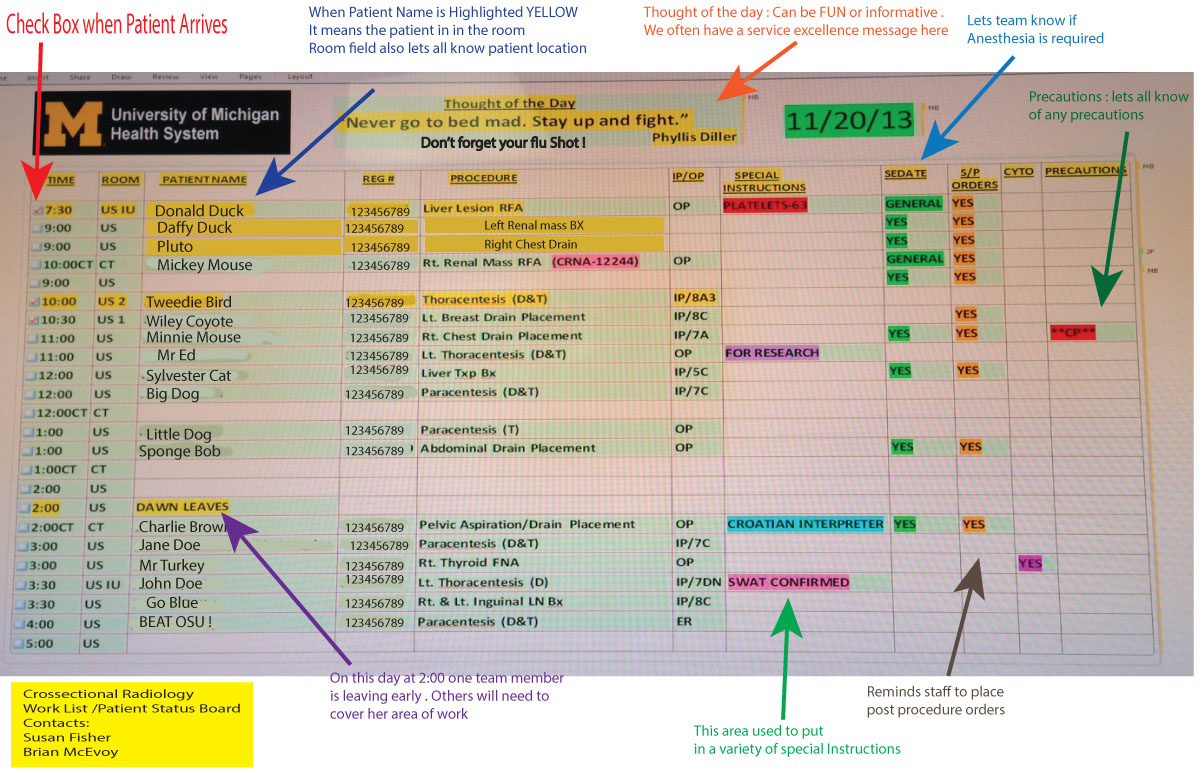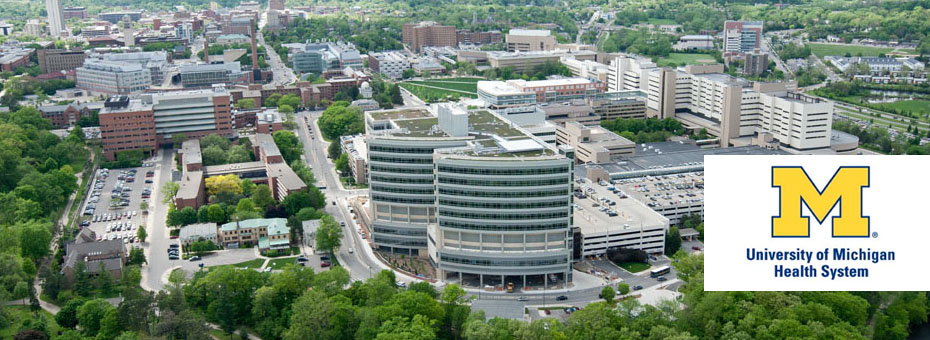The University of Michigan Health System is a large, complex academic health system. As such, we have our share of big, thorny problems that get in the way of delivering on healthcare’s “Triple Aim”: Better Care, Better Health, and Lower Costs. Given the magnitude of our challenges, it’s perhaps not surprising that we’re quick to look for THE BIG SOLUTION.
If we kept a list of “Frequently Proposed Solutions” handy, it would feature: buying and installing an IT system, hiring project managers to implement a new workflow, and engaging outside consultants to benchmark peer organizations and recommend “targets of opportunity” for cost cutting. Not very lean solutions, right?
But we are beginning to realize the wisdom of Henry Ford’s adage: “There are no big problems, there are just a lot of little problems.” And we are learning that effective countermeasures to those many little problems may be hiding in plain sight within the organization. We need to open our eyes to the ideas our staff are generating, encourage their creativity, and share their learning.
A poster session held at a recent Friday morning leadership meeting underscored this idea. Ten areas participated, bringing posters showing how they use visual management. The examples ranged from team huddle boards, to a color-coded algorithm for managing implantable cardiac devices, to a two-bin kanban system currently being piloted on an inpatient unit, to a manual job board used by Materiel Services to prioritize and track the status of requests for par level changes and supply room builds or rebuilds.
Leaders from around the Health System reviewed the posters in “speed dating” fashion. Groups of 6-7 progressed along a virtual gemba route, rotating stations every 3 minutes, cued by the ringing of an old-time school bell. Frontline staff members from each area, those who had developed the visual management tools, served as guides at each stop. They spoke to the purpose of the tool, how they used it (who used it, who updated it, how often), what information gap it addressed in their workplace, and how it made their work easier, or improved the experience of patients and families.
 My personal favorite was a patient status tool created by Radiology staff using Microsoft OneNote (available on all UMHS workstations). Physicians and staff in the Cross Sectional Radiology division are now able to view their daily patient work list on big screen monitors in two service locations, as well as view and update the list remotely from their office PCs. Everything needed to track their patients is visible at a glance. The team created this simple, practical tool using an existing resource; no programming or central IT support was required.
My personal favorite was a patient status tool created by Radiology staff using Microsoft OneNote (available on all UMHS workstations). Physicians and staff in the Cross Sectional Radiology division are now able to view their daily patient work list on big screen monitors in two service locations, as well as view and update the list remotely from their office PCs. Everything needed to track their patients is visible at a glance. The team created this simple, practical tool using an existing resource; no programming or central IT support was required.
The 70+ leaders who participated in this virtual “Go-See” told us they learned a lot they could take back with them to their area. They were struck by:
- The range of simple, often no-cost, ideas
- The “we can do it” attitude of the staff
- The substantial number of ideas with potential for spreading across the organization (for example, a visual display screen showing the status of surgical patients developed for the Family Waiting area of the Operating Rooms, which could be adapted for use in the Cardiac Procedures Unit)
Our planning team was requested to rerun this session for a larger audience of managers, and to reuse the speed dating format to encourage the sharing of learning on other topics.
Granted, some system-level problems in healthcare may call for a “Big Fix” (case in point: electronic medical records). But as we get better at understanding our value streams and breaking down large, complex problems into smaller chunks, our smart and resourceful staff will be up to the challenge of creating effective, low cost countermeasures.
We’re still early in our efforts to redirect the creativity of our teams from inventing workarounds to solving problems at their root cause. If we can concentrate the innovative thinking of 20,000+ faculty, staff, and students on the problems we need to solve together, we’ll be on track to realizing the transformation needed to hit our Triple Aim targets.
As Ford’s close friend Thomas Edison (who, BTW, also had Michigan roots!) said, “There’s a better way to do it. Find It”. At UofM Health System we’re discovering that our own backyard is a good place to start looking!





